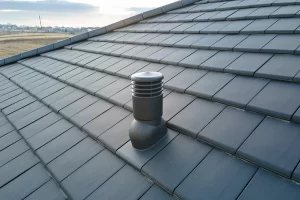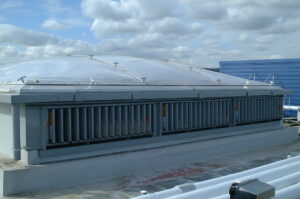Roof ventilation upgrade is one of the most overlooked but critical components of a healthy home. It plays a vital role in regulating temperature, controlling moisture, and extending the life of your roofing system. Without proper ventilation, a roof can suffer from premature wear, mold growth, increased energy costs, and structural damage.
But how do you know if your current ventilation setup is doing the job? Many homeowners remain unaware of ventilation problems until visible issues arise. This guide walks you through the key signs that indicate it might be time for a roof ventilation upgrade—and why making this investment can pay off in a big way, especially for homes in New Jersey’s variable climate. Understanding your attic’s airflow is essential to maintaining comfort, protecting your home’s structural integrity, and boosting long-term energy efficiency.
Why Roof Ventilation Matters
A well-ventilated roof helps maintain a balanced airflow through the attic, which is essential for both winter and summer months. In the summer, it prevents excessive heat buildup that can damage shingles and spike cooling costs. During winter, it reduces moisture that can lead to condensation, rot, and ice dams.
Proper ventilation also supports indoor air quality and prevents insulation from deteriorating prematurely. It’s a crucial part of a complete roofing system and should never be an afterthought. Without it, heat and humidity can wreak havoc on your home’s internal systems, leading to costly repairs that could have been prevented with a simple upgrade.
Additionally, a roof with balanced ventilation is less likely to experience warping, buckling, or roof deck deterioration. Good airflow extends the life of your shingles, underlayment, and structural wood, ultimately helping you get the most out of your roofing investment.
Signs You Might Need a Roof Ventilation Upgrade
1. Uneven Temperatures in the Home
If your upstairs rooms are significantly warmer than downstairs, poor ventilation may be the culprit. Trapped heat in the attic can radiate downward, making upper floors uncomfortable and overloading your HVAC system.
This imbalance is not only uncomfortable but also inefficient. It forces your air conditioning system to work harder, which leads to wear and tear, shorter appliance life, and higher utility bills. When insulation alone doesn’t solve the problem, ventilation should be your next focus.
2. Excessive Moisture or Condensation
Moisture in the attic is a red flag. If you notice water stains, mold, mildew, or a musty smell, it’s likely due to insufficient airflow allowing humidity to accumulate.
Excessive moisture encourages the growth of dangerous molds and can damage insulation, wood, and electrical systems. Over time, this can compromise your home’s structure and indoor air quality. An upgraded ventilation system can keep humidity levels in check and preserve a dry, healthy attic.
3. Ice Dams in Winter
Ice dams form when heat from the attic melts snow on the roof, which then refreezes at the eaves. This is often caused by poor attic ventilation and insulation, and it can lead to serious roof damage.
When melted snow refreezes, it creates a dam that blocks additional melting snow from draining properly. This trapped water can seep under shingles and damage your roof deck, causing leaks and water intrusion. Proper ventilation helps keep the attic temperature consistent, reducing the risk of ice dams forming.
4. Curling or Deteriorating Shingles
Overheating in the attic can cause shingles to age prematurely. If your shingles are curling, cracking, or losing granules, it might be due to trapped heat and moisture.
Premature deterioration not only affects curb appeal but also increases the likelihood of leaks and further roof damage. Roofing materials are designed to last under normal conditions, and poor ventilation accelerates their decline, costing you more in repairs or early replacement.
5. High Energy Bills
Uncontrolled attic temperatures affect your home’s overall energy efficiency. If your heating and cooling bills have been creeping up, your roof ventilation system may be part of the problem.
An attic that’s too hot in the summer or too cold in the winter disrupts the natural insulation properties of your home. This leads to increased use of HVAC systems year-round. Improved ventilation can stabilize attic temperatures, making it easier to regulate your home’s indoor environment and save on energy expenses.
Benefits of Upgrading Roof Ventilation
Improved Energy Efficiency
Better ventilation helps regulate attic temperature, reducing the strain on your HVAC system and lowering your energy bills. When your attic maintains a more stable temperature, it acts as a buffer between the outdoor elements and your indoor living space.
Reduced energy consumption not only saves money but also lessens your carbon footprint. For environmentally conscious homeowners, this upgrade can be a step toward a greener household.
Enhanced Roof Longevity
By minimizing heat and moisture buildup, you can prevent shingle damage, wood rot, and mold—ultimately extending the life of your roof. This leads to fewer repairs, fewer replacements, and more consistent performance throughout the seasons.
Homeowners can avoid early roof failure simply by improving ventilation, which protects the roof structure and underlying materials from preventable deterioration.
Better Indoor Comfort
A balanced ventilation system keeps indoor temperatures more consistent, especially during hot summers and cold winters. With even airflow, you reduce the likelihood of “hot spots” or drafty areas, making your home more livable.
This also means fewer HVAC cycles, better air quality, and a more pleasant overall home environment.
Moisture and Mold Control
With improved airflow, you reduce the chances of mold and mildew taking hold in your attic space. Mold spores can easily spread into your living areas, creating health risks for your family.
Upgraded ventilation systems help keep air moving, discourage condensation, and protect insulation from becoming saturated and losing effectiveness.
Increased Home Value
A well-maintained roof with an efficient ventilation system adds to the value of your home and reassures potential buyers of its quality. It signals that your home is energy-efficient and well cared for.
Buyers increasingly look for properties that are not just attractive but also sustainable and low-maintenance—two qualities that proper upgraded roof ventilation helps ensure.
Types of Roof Ventilation Systems
- Ridge Vents: Installed along the peak of the roof to allow hot air to escape. These vents create a continuous airflow across the entire roof line, providing effective passive ventilation.
- Soffit Vents: Located under the eaves to draw cooler air into the attic. Soffit vents are essential for promoting intake airflow, working together with exhaust vents to circulate air properly.
- Gable Vents: Placed on the gable ends for additional airflow. While not as efficient as ridge and soffit combinations, gable vents can be a good supplement or a primary solution on gabled roofs.
- Powered Attic Fans: Electrically powered fans that actively push hot air out. These are ideal for homes with high heat loads or poor natural airflow, though they must be properly balanced to avoid pulling conditioned air from the home.
- Turbine Vents: Wind-powered vents that help circulate air passively. These rotating vents operate without electricity and can provide excellent ventilation when positioned properly on the roof.
The right system—or a combination of systems—depends on your roof design and ventilation needs. A professional roofing contractor can assess your home and recommend the most effective solution. It’s important to evaluate both intake and exhaust options to ensure your attic ventilation is balanced and functional.
📞 Upgrade Your Roof Ventilation with Deegan Roofing
If you’re seeing signs that your roof ventilation may be underperforming, don’t wait for damage to set in. Deegan Roofing specializes in attic ventilation upgrades, roof repairs, and energy-efficient roofing systems throughout New Jersey.
Our team of experts can assess your current setup and provide a customized ventilation plan that enhances your roof’s performance and protects your home year-round. We use industry-best practices, high-quality materials, and over three decades of experience to ensure you get the results you need.
We’re here to help you take the next step toward a more efficient, durable, and comfortable home.
Contact Us Today:
Phone: (908) 322-6405
Email: info@deeganroofing.com
Website: www.deeganroofing.com
Free Estimate: Request a Quote
Trust Deegan Roofing for your Roof Ventilation Upgrade in the right way—improving comfort, efficiency, and durability with every project.


